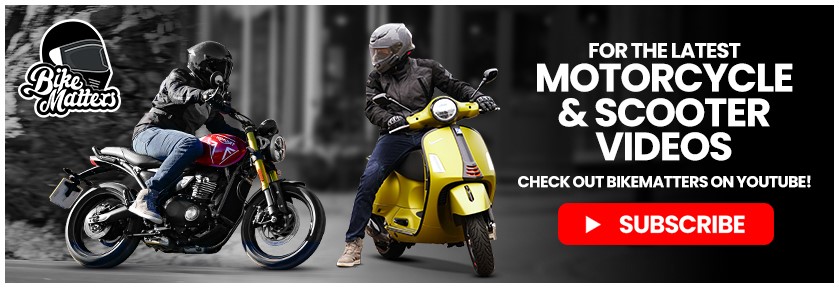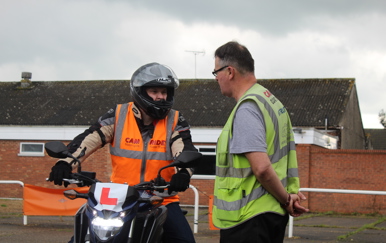Learning to ride doesn’t have to stop the moment you pass your full motorcycle test, in fact - passing your test is usually just the beginning of your biking journey.
Whether you’ve been riding for five minutes or five years, each of us can benefit from learning some new tricks and techniques to allow you to ride in style and keep yourself safe. When it comes to bikes there is no such thing as having too much knowledge!
In this blog, we are going to be running down everything you need to know regarding the types of advanced motorcycle riding courses that are available in the UK as well as explaining their benefits.
So without further ado - let’s get into it!
What is advanced motorcycle rider training?
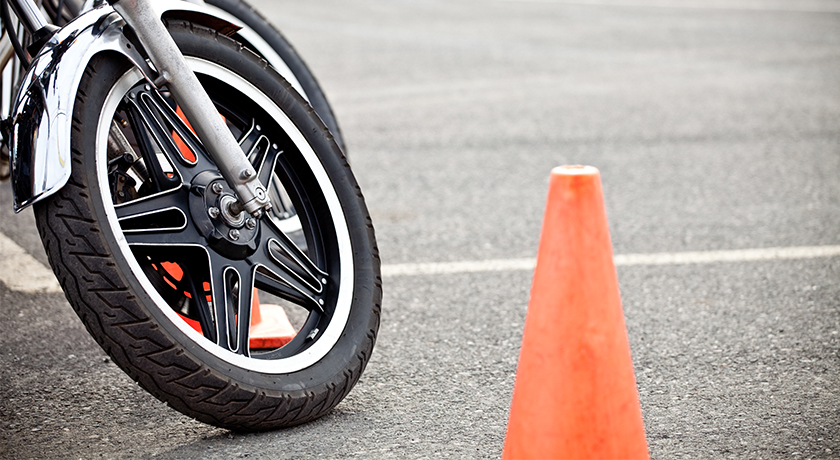
First things first, we are going to answer what advanced motorcycle riding is.
The word 'advanced' can sometimes seem intimidating, perhaps it seems like the training is only for the best and most skilled riders out there, and is all about going as fast as possible. However, this is not the case - Advanced Rider Training is about safety, learning new skills, and boosting confidence.
Today, several types of advanced motorcycle riding courses are available for you to partake in (which we will discuss a little later on) - so there truly is a course for everyone!
Who does advanced motorcycle training?
Advanced motorcycle training is for anyone who has passed their full motorcycle test and wants to learn and develop as a rider.
Whether you’re someone who has just passed your test and wants to build your confidence up, or perhaps you’re someone who has had their motorcycle stored away for a few years and you’re looking to freshen up - whatever the circumstance, advanced riding courses are there to help!
Why should you do advanced motorcycle riding training?
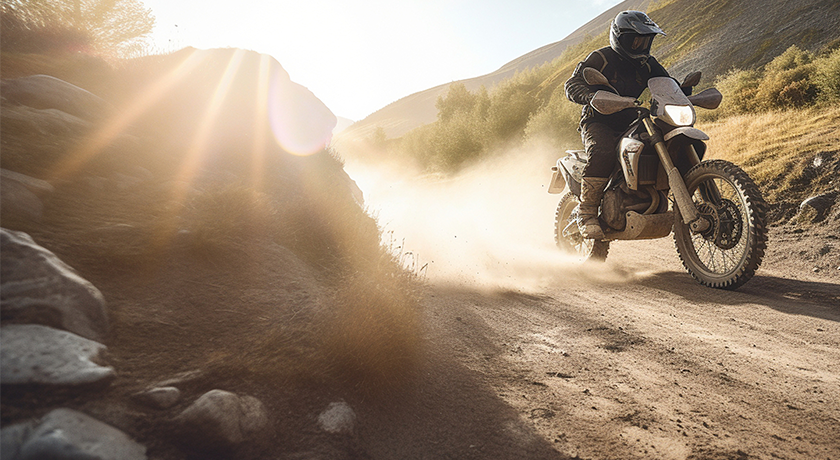
If you partake in an advanced motorcycle riding course, you are proven to be a safer rider, reducing your accident risk and exposure to bike damage. As we will mention below, a recognised advanced riding course can save you money on insurance as well as keep your long-term costs down such as fuel consumption and general motorcycle wear and tear - according to RoSPA.
Can doing an advanced motorcycle training course save you money?
You’ll be pleased to know that some motorcycle insurance providers can potentially give you a discount, provided you have attained an advanced riding qualification. Different insurers will accept different qualifications so it is always worth checking exactly which courses are eligible and could save you a few pennies!
Types of advanced riding courses
Throughout the UK you will find a variety of advanced training courses available for you to check out, however we have complied a list of the most popular:
Advanced Motorcycle Safety
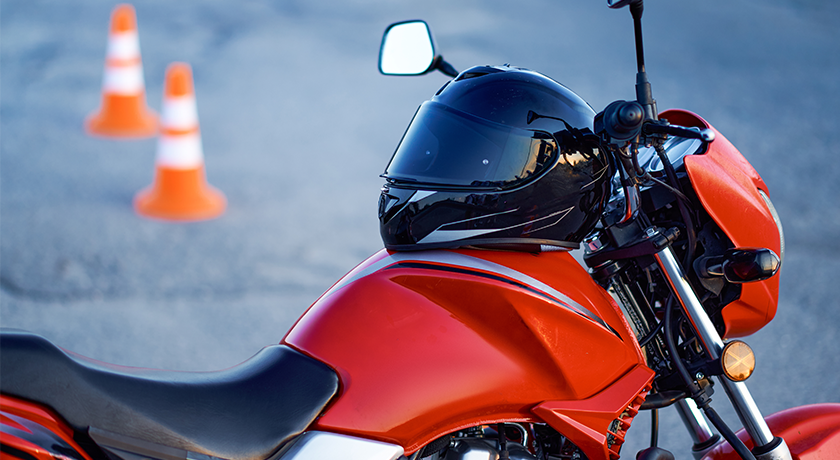
Starting off with both the most practical and important course on this list, we have advanced motorcycle training.
Advanced Motorcycle courses are suitable for anyone who has a bike licence. Whether you have just recently passed your test or perhaps you’re a seasoned rider who has had your bike stored in the garage for a few months and wants to brush up on your riding skills, advanced courses can help you reduce any bad habits you have picked up through your independent riding, or keep you up to date regarding the everchanging highway code adjustments.
Which one you choose will depend on your own preference and what is available in your area, so I would recommend checking them all out to see which one you like the sound of most. However, the focus and basic principles will be the same.
An expert instructor will take a look at your riding and advise you about things you could work on to become a better and safer rider. You can then embark on your 1 to 1 training course and receive a certificate when you have attained the required standard.
Off-road Adventure Training
I think it is fair to say that adventure bikes have become extremely popular over the last few years, especially thanks to new models entering the market such as the BMW GS and the Honda Africa Twin.
There are a variety of off-roading schools throughout the UK, specialising in teaching you all of the skills required to go on an off-road adventure with your motorcycle as well as maintenance/workshop training to help you in the event of a breakdown, miles from civilization all in a fun and friendly learning environment.
Courses worth checking out include one here in East Anglia named ‘Adventure Bike Training’ as well as the Yamaha off-roading experience run by former British Enduro champion Geraint Jones up in Wales!
Track Racing Training
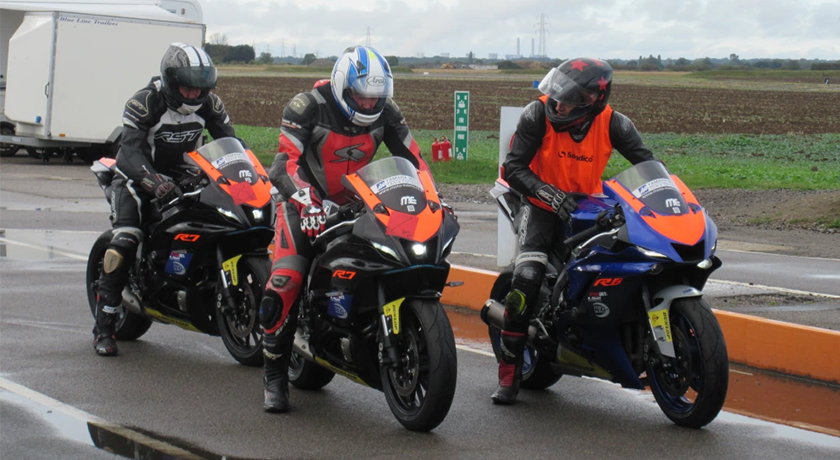
Image: British Superbike School
Next up we have track days. While they are a popular pastime for a wide variety of riders (including those who want to live out their MotoGP dreams), you’d be surprised how much receiving specialised training on a track can help with every aspect of riding on public roads.
According to gov.uk national statistics, between 2018 and 2022 one of the highest causes of incidents within the UK was due to loss of control so increasing a rider's level of control over their bike by enhancing their advanced skills and trailing can only be a good thing.
Courses such as the British Superbike School were set up to reduce traffic collisions by teaching the skills required to control your bike away from road hazards, the physics behind stopping, turning, and accelerating a motorcycle as well as how to respond to rider inputs.
Which advanced motorcycle riding course is the best?
The answer to this question will depend on what you are looking to get out of your advanced motorcycle riding course. If you are looking for a course to enhance your road riding skills or perhaps ways to try and bring down your insurance it is worth taking a look at some of the recognised courses out there such as:
Enhanced Rider Scheme
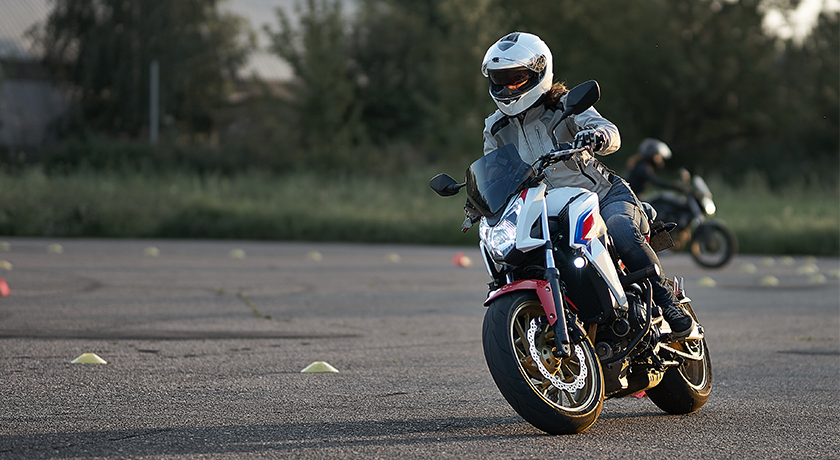
One great option to consider when carrying out an advanced motorcycle riding course is the DVSA enhanced rider scheme assessment and training. You can join this course regardless of your previous (or lack of) riding experience and will be assessed by an expert trainer over seven different modules including:
- Structured Planning Approaches to Riding
- Hazard Awareness and Defensive Riding Techniques
- How you use & progress with speed
- Overtaking & Filtering
- Bends and cornering
- Control at slower speeds
- Development of riding attitude
Once you have completed these modules, the expert will decide whether or not you will need further training. If the answer is no, you will immediately attain the DVSA certificate of competence. On the other hand, if the assessment deems that you require further training, then you and the trainer will draw up a training plan in the form of an all-day session or a few shorter sessions.
RoSPA
Another training course well worth considering is the Advanced Motorcycle Training course from RoSPA.
This training course will run over four days and will teach riders how to approach pre-ride motorcycle checks, the effects attitude and fatigue can have on your riding as well as helping you to develop a systematic yet defensive approach to hazard management and risk when out on the roads.
Once the training is complete you will then be ready to take the RoSPA's nationally recognised Advanced Motorcycle Test. To obtain a good grade, RoSPA states you must have a good knowledge of the Highway Code as well as Motorcycle Roadcraft.
iAM Roadsmart Advanced Rider Course
The final training course to take a look at is the iAM Roadsmart Advanced Rider course.
Before you start the course you will be paired with one of the company’s highly skilled Observers who already hold an additional Institute of the Motor Industry qualification.
Once matched, you will meet the trainer at a convenient location for the both of you then over a series of observed rides you will learn the skills required to develop your core riding technique as well as how to apply the ‘IPSGA’ framework (Information, Position, Speed, Gear, Acceleration) to a variety of on-road situations including bends, motorways, and during overtakes.
On the other hand, if you are looking for more of a ‘fun’ advanced training course such as one to enhance your off-roading capabilities or even wanting to learn how to do a wheelie we would recommend:
Wheelie School
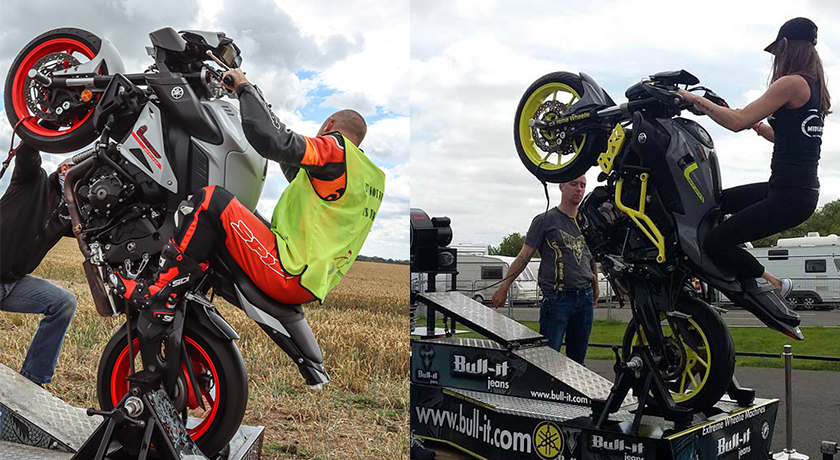
Kicking off the slightly more ‘entertaining’ courses, if you’ve ever wanted to pop out some impressive wheelies on your bike - then wheelie school might be the one for you!
These training courses will allow you to learn how to do a wheelie in a safe environment in comparison to learning to do it on UK roads which is highly dangerous and in no way recommended.
How is it possible to learn how to wheelie safely you ask? Training schools such as the Next Level Wheelie School use state-of-the-art wheelie machines. These machines can let you get used to the technique and control required to pull a giant wheelie without any risk of flipping the bike or dropping it.
Motocross Training
Similar to the track race training that we mentioned earlier, motocross training can give a different experience than you are used to and help develop skills that you can take back to the road. It's a fun and exhilarating experience that makes for a great day out and can make you a better rider!
Schools such as LDR Lee Dunham Racing, offer taster sessions, half-day or full-day sessions which can either be carried out 1:1 or in small groups. Providing you with all of the gear you require, you will receive tuition from former British and European champion Lee Dunham and his team.
You will also learn safety and control techniques as well as how to read the circuit and choose proper positioning - all handy skills to pick up and use when riding on UK roads!
Knee Down Training
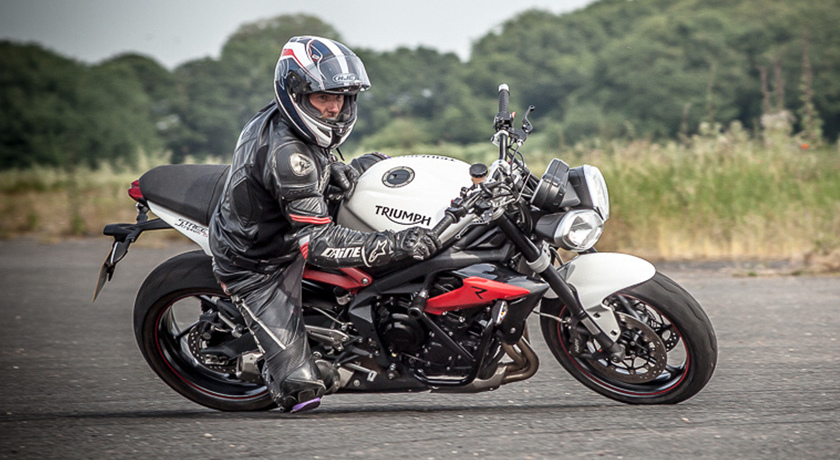
Another interesting course to look into is the Knee-down Riding Training by i2i - perfect for those who wish to live out their MotoGP dreams!
The i2i Motorcycle Academy created this course due to the high demand and whilst this course was originally orchestrated to learn how to slide a knee when going around corners, i2i found that the riders gained much more experience and techniques applicable to UK roads than ever expected!
The Last Stop!
So there you have it, here is my guide to everything you need to know regarding Advanced Motorcycle Training courses…
If you have any other questions about these courses, please feel free to pop them in the comments below and we will get back to you.
Last but not least, if you are looking for motorcycle insurance, make sure to get a quote direct with Lexham!

